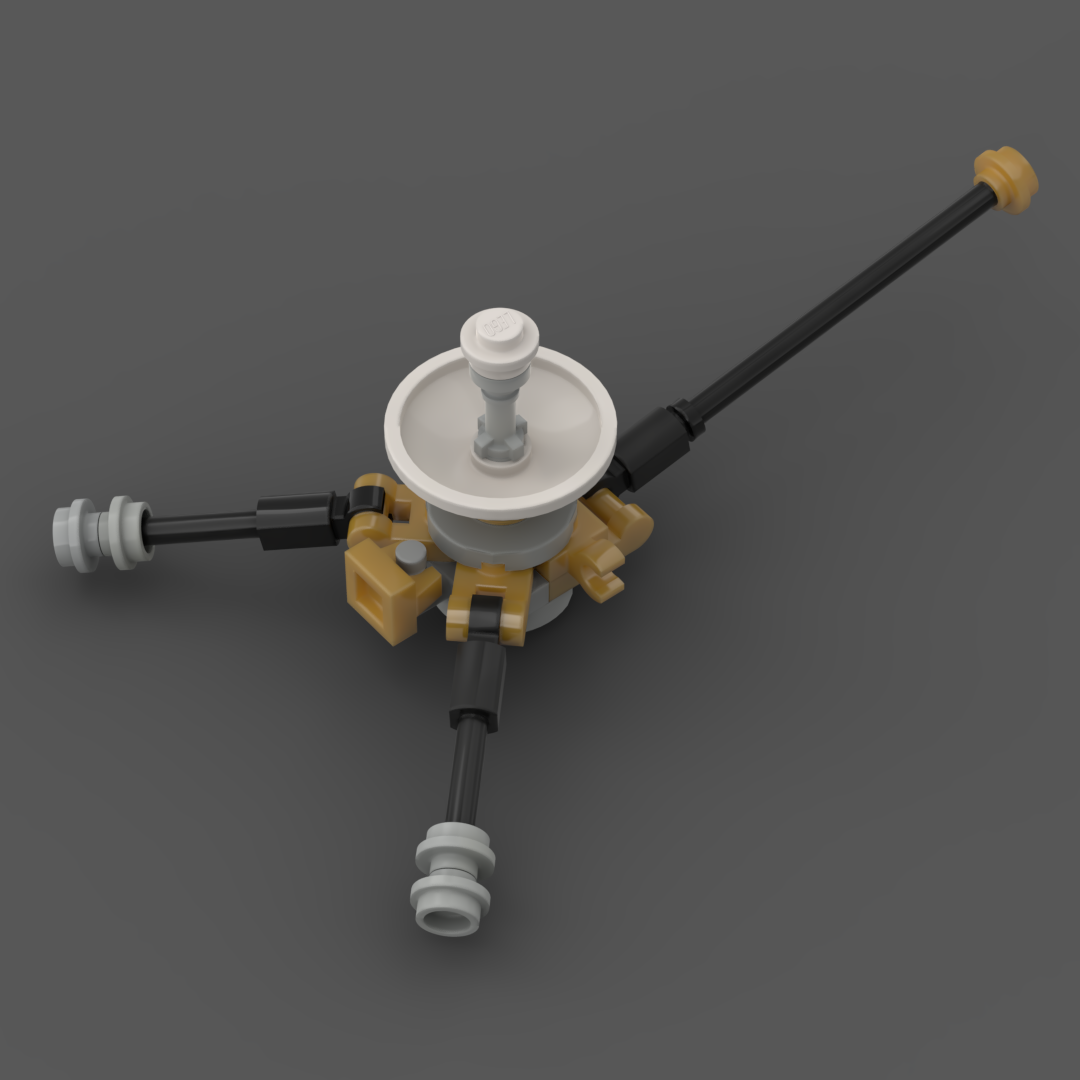
LEGO Designer:
Dan Fallon (phreaddee)
Designed:
February 2019
Categories:
Payloads, All, Outer Planets, Space Agency - NASA
Launch Vehicle Details
Stages:
Length:
Diameter:
Mass at Launch:
Low Earth Orbit Capacity:
Total Thrust:
Apogee:
Class:
Pioneer 10
Pioneer 10, launched on March 2, 1972 completed the first mission to the planet Jupiter. Thereafter, Pioneer 10 became the first of five artificial objects to achieve the escape velocity needed to leave the Solar System. This space exploration project was conducted by the NASA Ames Research Center in California, and the space probe was manufactured by TRW Inc.
Pioneer 10 was assembled around a hexagonal bus with a 2.74-meter (9 ft 0 in) diameter parabolic dish high-gain antenna, and the spacecraft was spin stabilized around the axis of the antenna. Its electric power was supplied by four radioisotope thermoelectric generators that provided a combined 155 watts at launch.
Between July 15, 1972, and February 15, 1973, it became the first spacecraft to traverse the asteroid belt. Photography of Jupiter began November 6, 1973, at a range of 25,000,000 kilometers (16,000,000 mi), and about 500 images were transmitted. The closest approach to the planet was on December 4, 1973, at a range of 132,252 kilometers (82,178 mi). During the mission, the on-board instruments were used to study the asteroid belt, the environment around Jupiter, the solar wind, cosmic rays, and eventually the far reaches of the Solar System and heliosphere.
Radio communications were lost with Pioneer 10 on January 23, 2003, because of the loss of electric power for its radio transmitter, with the probe at a distance of 12 billion kilometers (80 AU) from Earth.
Pioneer 11
Pioneer 11, launched on April 6, 1973 to study the asteroid belt, the environment around Jupiter and Saturn, solar wind and cosmic rays. It was the first probe to encounter Saturn and the second to fly through the asteroid belt and by Jupiter. Thereafter, Pioneer 11 became the second of five artificial objects to achieve the escape velocity that will allow them to leave the Solar System. Due to power constraints and the vast distance to the probe, the last routine contact with the spacecraft was on September 30, 1995, and the last good engineering data was received on November 24, 1995.
Designer Notes
Part count: 25 bricks, 17 lots.
| Unit | width | length | height |
|---|---|---|---|
| Studs | 9.1 | 14.0 | 5.2 |
| Centimetres | 7.3 | 11.2 | 4.2 |
| Inches | 2.9 | 4.4 | 1.6 |
Downloads
Part count: 25 bricks, 17 lots.
| Unit | width | length | height |
|---|---|---|---|
| Studs | 9.1 | 14.0 | 5.2 |
| Inches | 2.9 | 4.4 | 1.6 |
| Centimetres | 7.3 | 11.2 | 4.2 |
No external URL provided.
Launch History information from space.skyrocket.de
Launch History information from space.skyrocket.de
Related Posts
None found

